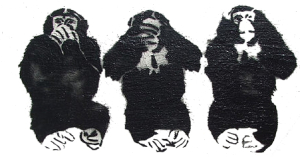
My employer has decided to send all those of us involved in recruitment and promotion on Unconscious Bias training, in recognition that unconscious bias may affect our decisions in one way or another. Unconscious bias in our dealings with others may be triggered by both visible and invisible characteristics, including gender, age, skin colour, sexual orientation, (dis)ability, accent, education, class, professional group etc.. That started me thinking – what about unconscious bias in relation to digital archaeology?
‘Unconscious bias’ isn’t a term commonly encountered within archaeology, although Sara Perry and others have written compellingly about online sexism and abuse experienced in academia and archaeology (Perry 2014, Perry et al 2015, for example). ‘Bias’, on the other hand, is rather more frequently referred to, especially in the context of our relationship to data. Most of us are aware, for instance, that as archaeologists we bring a host of preconceptions, assumptions, as well as cultural, gender and other biases to bear on our interpretations, and recognising this, seek means to reduce if not avoid it altogether. Nevertheless, there may still be bias in the sites we select, the data we collect, and the interpretations we place upon them. But what happens when the digital intervenes?


